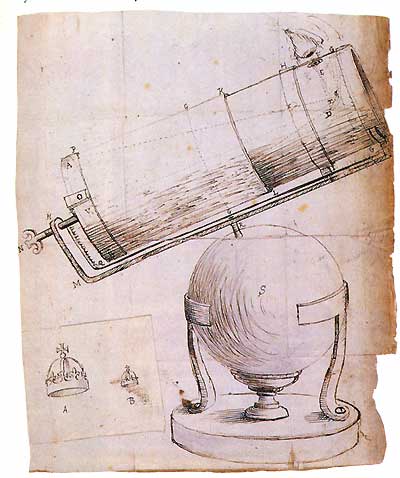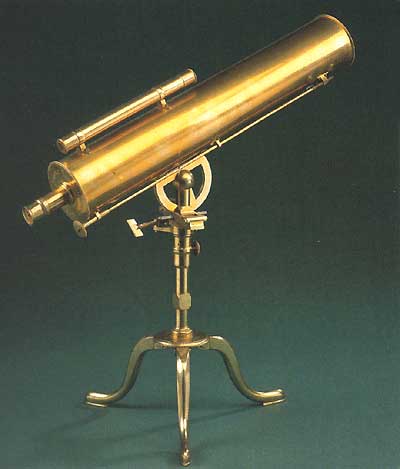The Shift From Refracting to Reflecting
Spherical
and chromatic aberrations continued to be
a problem for telescope makers for quite some time. It was
hypothesized that
mirrors could solve the problem by focusing all light on a
specific point. This
idea was first successfully implemented by Isaac Newton in
1680. Newton used a
large mirror placed in the back of a telescope to collect
light. This light was
then focused on a much smaller mirror which in turn
deflected it onto an
eyepiece. The image below is a drawing of Newton’s
telescope.

Newton's Telescope design
In 1730
inventor James Short improved on Newton’s
design by using parabolic and elliptic mirrors. The
problem with flat mirrors was
similar to that of lenses where not all the light was able
to focus on one
point. parabolic mirrors curved inward causing the light
collected in the
center to align more closely with the light on the edges
of the mirror.
Reflector telescopes became dominant due to their ability
to collect more light
and get rid of spherical/chromatic aberration.

One of James Short's Telescopes